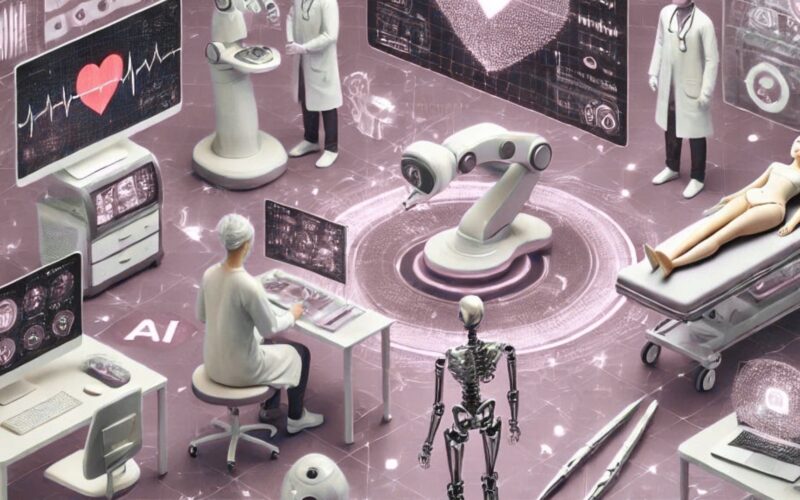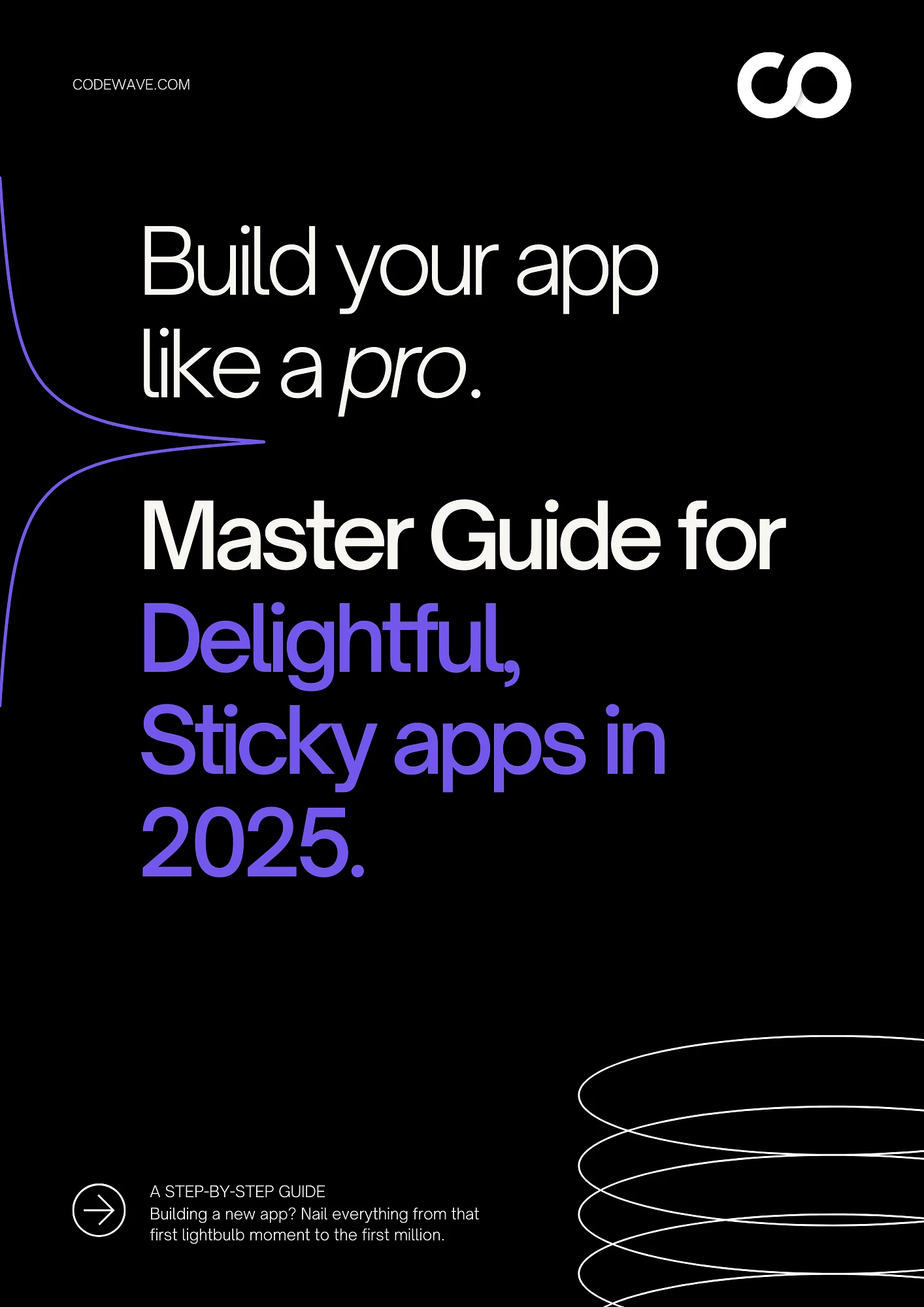Artificial intelligencetrends in healthcare sound promising on paper, yet you still face full waiting rooms, tired clinical teams, rising costs, and data scattered across systems. You may have a few AI pilots running, but only a small number reach real scale or produce measurable returns.
Global signals show the pressure building. The WHO projects a shortage ofup to 11 million health workers by 2030, creating bigger gaps in patient access and clinical capacity. So the question is simple. Which AI trends help you improve care delivery and support your financial goals, and which ones are still too early to matter?
This blog focuses on practical, outcome-driven artificial intelligence trends in healthcare, the ones influencing diagnostics, operations, and patient experience today, and the ones you should plan for over the next few years.
Key Takeaways
- The AI trends that matter in 2026 are the ones that fix real pressure points such as documentation load, diagnostic delays, and care access gaps.
- Reliable outcomes depend on strong data quality, workflow integration, and clear validation, not broader model claims.
- High-impact areas include imaging AI, clinical risk prediction, remote monitoring, GenAI documentation support, and automation for administrative work.
- Near-term innovations such as agentic AI, digital twins, and embedded devices will influence how hospitals manage demand and personalise care.
Where AI Fits in the Healthcare Technology Stack Today
Healthcare demand is rising faster than systems can respond. Clinical teams are shrinking, operating costs increase each year, and patient volumes continue to grow. These pressures explain why organisations are turning to AI as a practical tool for capacity, accuracy, and throughput.
Key data illustrates the strain on the system:
- Around 4.5 billion people still lack access to essential health services.
- U.S. healthcare organisations continue to increase AI investment, estimated at over 6 billion dollars in 2023.
Understanding the Types of AI used in Healthcare Today
Understanding artificial intelligence trends in healthcare is easier when you break the technology into clear groups. Each group aligns with a different set of clinical or operational challenges.
1. Perception model
These systems work on unstructured inputs such as scans, signals and free text. You see them in radiology triage tools, ECG anomaly detection and NLP-powered document review. They support tasks that rely on pattern recognition.
2. Predictive models
These tools estimate the likelihood of future events. Hospitals use them for readmission risk scoring, early warning signs of deterioration, and demand predictions for departments with fluctuating volumes. Their value lies in giving teams more time to intervene.
3. Generative AI
These models produce structured output from raw information. Typical uses include encounter summaries, discharge drafts, consent explanations, and assistant-style support for clinicians and patients. Adoption is growing, with more than70% of surveyed healthcare organisations exploring or deploying generative AI.
Across all three groups, the most dependable results today come from tools designed for a narrow task inside a specific workflow.
The Adoption Shift toward Domain-Specific Tools
Adoption data shows a clear shift. Healthcare organisations are moving from scattered pilots to targeted use cases with measurable outcomes.
A recent review notes that about 63 % of healthcare organisationsalready use AI, with another significant portion evaluating it. Usage varies by setting, but the pattern is consistent: proven tools gain traction faster.
However, the adoption of advanced AIis not consistent across all healthcare organisations. Large urban hospitals report usage rates of 80-90%, while smaller or rural hospitals often report rates below 50%.
The strongest adoption clusters appear in:
- Imaging support, where AI reduces reporting delays and improves triage accuracy.
- Revenue-cycle automation, where coding and claims errors drop with AI-supported review.
- Documentation tools that reduce the time clinicians spend writing or summarising notes.
- Case-management systems that prioritise high-risk patients using predictive scoring.
Also Read: Machine Learning Pattern Recognition: A Beginner’s Guide
Want AI that solves real problems instead of creating more workflows? Our team designs custom AI and ML solutions that automate, predict, and accelerate growth. Connect with Codewave and explore what smarter operations could look like for you.
Top Artificial Intelligence Trends in Healthcare in 2026
Artificial intelligence trends in healthcare gain importance when they address pressure points that block timely, safe, and affordable care. The trends below stand out because they deliver clear operational and clinical improvements rather than theoretical value.
Each one includes the practical context so you can judge whether it aligns with your priorities.
1. AI-driven diagnostics and medical imaging
Imaging departments face rising scan volumes while specialist capacity remains constrained. That imbalance slows reporting and risks delaying detection of key pathologies.
Why this issue persists
Radiology demand grows each year while specialist supply grows slowly. This creates a gap that manual review cannot close.
- CT, MRI, and X-ray utilisation increases with screening and ageing populations.
- Manual review of large volumes leads to bottlenecks and fatigue.
How AI is applied
AI strengthens detection accuracy and speeds up the review pipeline by supporting radiologists rather than replacing them.
- AI systems flag suspected lesions, fractures or nodules, providing a second layer of review.
- Worklist triage tools push high-risk images to the front of the queue, reducing time to diagnosis.
- Automated measurements and standardised reports reduce manual effort and limit variability.
Implementation essentials
Hospitals that gain value focus on high-quality datasets and integrated workflows rather than isolated pilots.
- High-quality labelled images and consistent annotation.
- Tight integration with PACS or RIS and clear audit trails.
- Human validation to oversee AI recommendations.
- Continuous monitoring to track model drift and accuracy.
2. Clinical decision support and risk prediction
Many deterioration events and avoidable readmissions occur because early signals are missed or scattered across different systems.
The underlying gap
Clinicians manage large caseloads and fragmented data streams, making consistent early detection difficult.
- Vital-sign trends, lab values and notes sit in different systems.
- Manual interpretation slows response time, especially during peak hours.
How AI helps
AI models scan patterns across multiple inputs and highlight risk far earlier than standard processes.
- Sepsis alerts surface early deterioration signals.
- Readmission scores support targeted follow-up planning.
- Delphi-2M and similar modelsforecast population-level susceptibility
Operational impact
Hospitals see measurable benefits when these tools live inside clinical workflows.
- Fewer avoidable escalations and adverse events.
- Better allocation of high-acuity beds due to early identification.
- Consistent, guideline-aligned decision support rather than judgment replacement.
3. Remote monitoring and IoMT-supported care
Chronic conditions drive significant admissions, and most deterioration happens outside clinical settings where teams lack visibility.
Why the gap exists
Patients leave facilities with limited structured monitoring, and subtle changes often go unreported.
- Follow-up is inconsistent and heavily manual.
- Teams lose continuous access to vital trends.
How AI and IoMT respond
AI filters continuous data streams from connected devices and helps teams intervene earlier.
- Wearables and home devices collect round-the-clock vitals.
- AI identifies meaningful changes and reduces noise.
- Early alerts reduce emergency visits and unmanaged episodes
What implementation requires
Successful programmes focus on reliability, integration and clear intervention rules.
- Validated devices with consistent accuracy.
- Stable connectivity and strong security controls.
- Alerts routed directly to care-management workflows.
- Threshold tuning to prevent alarm fatigue.
4. Administrative automation that frees clinical time
Clinicians and administrators spend substantial time on documentation, scheduling, claims, and coding. Those tasks reduce time available for patient care and raise burnout risk.
Where the burden lies
Documentation, coding and authorisation require precision and time, diverting attention from patient care.
- High volumes of repetitive data entry.
- Manual claims and authorisation processes create delays.
How AI is applied
AI reduces workload by converting unstructured information into usable formats and automating rule-based tasks.
- AI scribes generate structured notes during or after visits.
- Summarisation tools condense long patient histories.
- RPA and AI streamline coding, claims, and authorisation.
- Reports show that about 66% of physicians used some formof healthcare AI in 2024.
Benefits realised
Hospitals report measurable improvements when administrative AI is well integrated.
- Shorter documentation cycles for clinicians.
- Fewer denied claims and cleaner submissions.
- Lower clerical load and improved team satisfaction.
Want your health system to predict risks instead of reacting to them?Codewave deploys ML stacks to forecast patient needs in real time. Our models integrate with your EHR, IoT devices, and workflows to alert teams before complications escalate.
Contact us today and build a predictive ecosystem that strengthens care and cuts operational delays.
After assessing the current impact, it is important to evaluate innovations moving from concept to practical use that could reshape care delivery by 2030.
Future Trends in Artificial Intelligence in Healthcare: Will AI Change Care by 2030?
Artificial intelligence trends in healthcare will shift from support tools to active collaborators across care and operations. By 2030, the biggest gains will come from AI systems that work inside clinical workflows, complete multistep tasks, and improve prediction accuracy at scale.
1. GenAI Copilots in every Clinical and Operational Workflow
GenAI will sit beside clinicians and staff, producing structured output from raw conversations, notes, and instructions. The goal is to reduce clerical time and improve documentation quality.
Where GenAI brings immediate support
GenAI can remove hours of manual work each week by producing drafts that clinicians only refine.
- Drafting clinical notes, discharge summaries and referral letters from raw transcripts.
- Offering code suggestions for billing and clinical documentation.
- Creating patient-facing plan explanations, medication guidance and insurance explanations using digital human style interfaces (Accenture).
Risk lens for leaders
Every deployment will need strict controls to avoid errors.
- Guardrails to prevent hallucination during summarisation.
- Alignment with clinical guidelines and organisational policies.
- Clear audit trails for all generated output.
You can also explore how Codewave builds these systems in our GenAI developmentcapabilities, which focus on accuracy, governance, and rapid deployment.
2. Agentic AI and AI agents across Hospitals and Health Systems
Agentic AI refers to systems that complete multistep tasks without constant prompting. This unlocks new levels of automation inside busy hospitals.
How agentic systems support clinical and operational work
These systems take on entire workflows rather than isolated tasks.
- Scheduling, guideline retrieval, chart review and option drafting completed by a single agent.
- Contact-centre triage agents that gather symptoms, route cases and prepare the intake sheet.
- Operating theatre scheduling agents that adjust based on cancellations or delays.
- Simulation and training agents for clinical teams.
Why this matters
As agentic tools mature, they free staff from repetitive steps that slow care delivery and increase burnout.
3. Digital Twins, Simulation and Precision Care
Digital twin technology will expand from industrial use to patient-level and hospital-level simulation. These twins help teams test decisions without risk and improve precision in treatment planning.
How digital twins improve clinical and operational accuracy
Digital twins allow organisations to preview the impact of decisions before acting.
- Patient-level twin simulations of treatment paths for cardiac care, oncology, and chronic disease.
- Hospital-level twin modelling of flow, capacity, and demand to reduce overcrowding.
Link to financial outcomes
These models support value-based care by predicting complications earlier and reducing avoidable utilisation.
4. AI in Medical Devices and Embedded Healthcare Innovation
Next-generation devices will include built-in intelligence that reacts instantly to patient signals. This pushes AI closer to the bedside and reduces manual oversight.
Where embedded AI is gaining traction
Signals from devices become actionable insights in real time.
- Smart stethoscopes that detect cardiac issues in seconds.
- Intelligent imaging probes that guide operators during procedures.
- Surgical and rehab robots assisting with precision tasks.
- Embedded AI in beds, pumps and wearables that run safety checks and alert staff instantly.
Impact on care delivery
These devices add an always-on layer of protection and reduce human error during routine monitoring.
5. Population Health and Public Health Use Cases
Population-scale AI helps health systems prepare for demand, plan screening programmes and respond to rising risks.
Where population AI strengthens planning
AI helps teams predict what communities will need before problems escalate.
- Forecasting disease spread and seasonal surges.
- Identifying high-value screening targets using multiyear data trends.
- Optimising resource allocation for public health teams.
Privacy and data protection
Federated learning and privacy-preserving analytics will allow cross-institution collaboration without exposing patient data.
Also Read: Understanding the AI Development Process
Despite its potential, artificial intelligence trends in healthcare face significant barriers before reaching full impact. These hurdles span data, integration, regulation, and workforce readiness.
What Holds Back AI in Healthcare Today?
AI often slows down in healthcare because the basics are not in place. Problems usually come from messy data, hard-to-connect systems, unclear rules, and teams that are not prepared to use new tools.
These issues prevent reliable results and make scaling difficult. You reduce the risk by fixing data quality, improving integration, following clear validation steps, and preparing staff to work with AI from day one.
1. Data quality, bias, and governance gaps
Data issues undermine many AI initiatives before they begin. Without good data, results remain unreliable and trust falters.
Core challenges
- Many health systems operate with fragmented, incomplete EHR records and missing values, which weakens model performance.
- Bias arises when the training data under-represents certain demographic groups or clinical scenarios, thereby reducing fairness and accuracy.
Governance essentials
To reduce risk, you need clear frameworks for data lineage, access controls, audit trails, and ongoing model monitoring. This ensures transparency, improves model robustness, and protects against unintended harm.
2. Integration with legacy systems and clinical workflows
AI tools often fail not because the model is weak, but because integration is weak. Systems, data, and workflows must sync.
Why it fails
- A study found that integration across healthcare applications remains a major barrier—95 % of IT leaders cited integration issues as the main AI adoption hurdle.
- Hospitals continue to rely on outdated EHRs, PACS, LIS, and claims systems that don’t easily integrate with modern AI platforms.
What supports success
Prioritise API-driven architecture, event-driven orchestration, and adherence to interoperability standards (e.g., FHIR). Ensure new AI tools align tightly with existing clinical workflows to maximise adoption and impact.
3. Trust, regulation and clinical liability
Even well-designed AI can fall short if it lacks clinician trust or regulatory clarity. These issues slow deployment and scale.
What causes risk
- The regulatory status of healthcare AI remains complex: many models fall somewhere between software tools and medical devices.
- High-stakes healthcare contexts demand evidence and validation, yet many projects skip rigorous validation or post-market surveillance.
What leaders must do
Develop protocols for clinical validation, involve regulatory teams early, and build audit mechanisms. Treat AI tools as high-trust systems, not experiments, to gain clinician confidence and manage liability.
4. Change management and workforce readiness
Even the best AI tool fails if staff are not ready for it. People, processes, and culture matter as much as technology.
Where gaps appear
- A study found that while 80 % of healthcare organisations claim to have a GenAI strategy, only about54 % feel their capabilities are strong, and 75 % report skills shortages.
- Clinicians resist tools that don’t align with their work or increase cognitive load.
What makes the difference
Engage clinical champions, integrate IT, operations, and risk teams from the start, and deliver training tailored to new workflows. Design human-in-the-loop processes that allow staff to retain control and confidence.
How Codewave Supports AI Adoption in Healthcare
Codewave supports organisations that want AI built with clarity, strong engineering, and fast delivery. We focus on clean data, automation, GenAI tools,s and predictive systems that fit directly into your workflows.
Each solution is built for accuracy, auditability, and scale, so your teams see reliable results without added complexity.
What you can expect from Codewave
- Purpose-built GenAI and AI tools: Assistants, summaries, and automation designed for specific clinical and operational tasks.
- Conversational AI for patients and staff: Bots that understand intent, process voice input, and improve accuracy over time.
- Automation for routine administrative work: RPA plus AI to simplify claims, coding, prior authorisation, and scheduling.
- Predictive models for earlier action: Systems that connect signals, flag risks, and support timely interventions.
- Strong governance and reliability: Data lineage, access controls and audit trails built into every solution.
- Fast, patient-safe releases: Iterative delivery so teams see progress early without workflow disruption.
- Cloud-ready scale: Architectures that adjust to usage and maintain performance during peak loads.
Explore our portfolioto see how these capabilities translate into outcomes across healthcare projects:
Conclusion
The AI trends that will matter in healthcare in 2026 are the ones that solve the pressure you face each day. Rising demand, heavy documentation, delayed diagnosis, and uneven access to care continue to strain teams.
Research shows that hospitals achieve better results when they focus on high data quality, smooth workflow integration, and clear validation. These basics help imaging AI, GenAI documentation tools, and predictive models deliver measurable improvements.
If your goal is practical AI that fits your workflows, strengthens decisions and reduces effort across teams, Codewavecan support you with clean data pipelines, custom AI systems and dependable engineering.
Explore what you can build with us.
FAQs
Q: How do hospitals decide whether to build AI in-house or work with external partners?
A: The decision usually comes down to data maturity, engineering capacity and required speed. Hospitals with clean data pipelines and dedicated ML teams can build select tools internally, but most rely on partners for model development, integration and monitoring. External teams shorten delivery time and reduce the risk of technical debt.
Q: Can AI support value-based care programmes without adding complexity for clinicians?
A: Yes, when AI is used to surface risk signals, documentation gaps and care opportunities automatically rather than adding new tasks. Hospitals use AI to flag rising-risk patients, guide follow-up planning and improve coding accuracy, all of which strengthen performance in value-based contracts without increasing clinician workload.
Q: How does AI adoption change IT infrastructure planning for hospitals?
A: AI increases the need for scalable cloud environments, real-time data streams and strong security governance. Teams must prepare for higher compute demand, stricter audit requirements and continuous model monitoring. Many organisations shift toward event-driven architectures to support AI tools across clinical and operational workflows.
Q: What should leaders know about AI procurement before signing vendor contracts?
A: Leaders should request validation evidence, model performance data across different populations, details on data usage and clear SLAs for monitoring and updates. They should also confirm how the vendor handles drift, bias, integration and versioning. Procurement mistakes often occur when these details are not reviewed upfront.
Q: Does AI adoption change how hospitals measure workforce productivity?
A: Yes, productivity metrics shift from volume-based measures to time saved, decision quality, reduced error rates and smoother flow. AI frees clinicians from low-value tasks, so leaders track how reclaimed time improves patient interaction, reduces backlogs and strengthens overall care delivery.
Codewave is a UX first design thinking & digital transformation services company, designing & engineering innovative mobile apps, cloud, & edge solutions.







